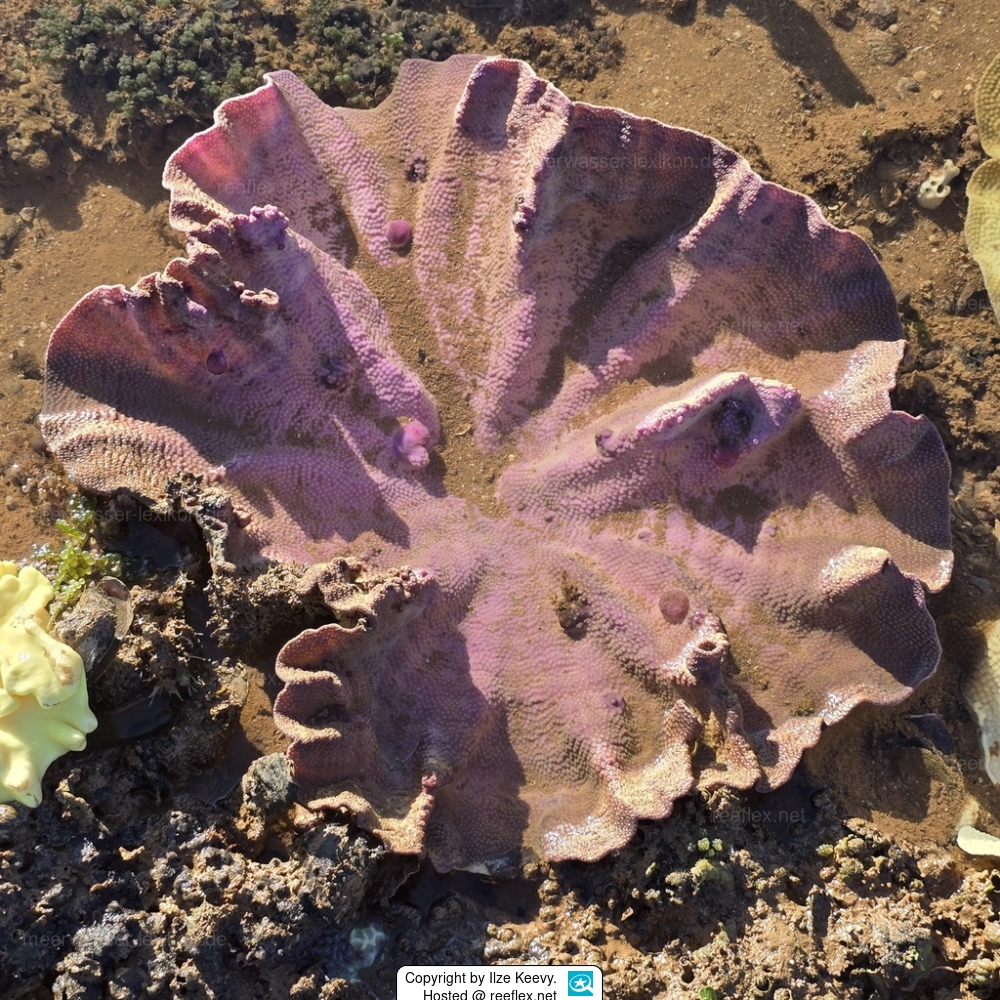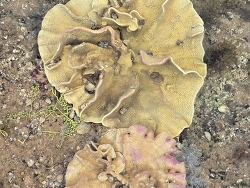Info
Colonies are initially flat laminae which develop elongate, upright, bifacial fronds. Corallites are conical, regularly spaced, and have a uniform appearance.
Colour: Usually grey, green or brown, with paler calices.
Habitat: Shallow reefs and rocky foreshores of subtropical locations.
Abundance: Uncommon.
Similar species:
Taxonomic note: Source reference: Veron (2000). Taxonomic reference: Veron and Pichon (1980). Additional identification guide: Veron (1986)
Text source: Corals of the world by Charlie Veron
Synonymised names
Turbinaria aequalis Quelch, 1886 · unaccepted > junior subjective synonym
Turbinaria dendrophyllia Bernard, 1896 · unaccepted > junior subjective synonym
Turbinaria gracilis Bernard, 1896 · unaccepted > junior subjective synonym
Turbinaria nidifera Bernard, 1896 · unaccepted > junior subjective synonym (?)







 Dr. Ilze Keevy, Australien
Dr. Ilze Keevy, Australien



















